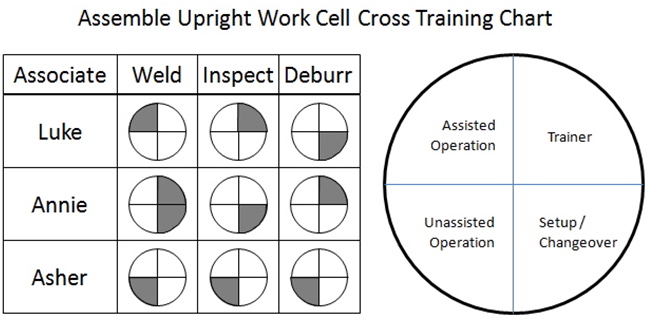Your cart is currently empty!
Lean Six Sigma Improvement and Work Design, Part 8
This is the eighth post in a series taken from a lesson in Pyzdek Institute Lean Six Sigma Black Belt training. Future posts will continue the topic. You can find all of the articles in the series by searching this site for the title.
What skills do the people need?
The Lean Six Sigma cell layout requires that workers be multi-skilled and able to handle any of the tasks in the work cell. This differs from an operations-based layout where, for example, all drill presses are placed together and a person would only need to know how to operate a drill press. In contrast, a work cell might have drill presses, grinding machines, mills, a deburring station, etc. and all workers need to know how to operate all of this equipment competently.
How can we keep track of cross-training?
It’s a good idea to keep track of which operator has which skill in a work cell, as shown in Figure 1.

An additional advantage to the continuous cell layout is that workers don’t waste time standing around waiting for the machine to finish a task. Instead they load one machine, start it, and move to the next operation in the cell while the machine completes its automatic cycle.
How can we arrange the workplace and assign workers so those working in it can easily help one another?
Yet another efficiency enhancement is that when more than one person is working in the cell the workers can help each other if one of them falls behind. Quality also improves as workers are able to check on each other’s work and often catch quality problems right away. Work cell layout should deliberately take this into account, making it easy for a more experienced worker to help a fellow worker. Worker assignment should also consider this. Try to assign workers so new or slower people have more experienced and faster workers on either side, or immediately after them in the flow.

Leave a Reply